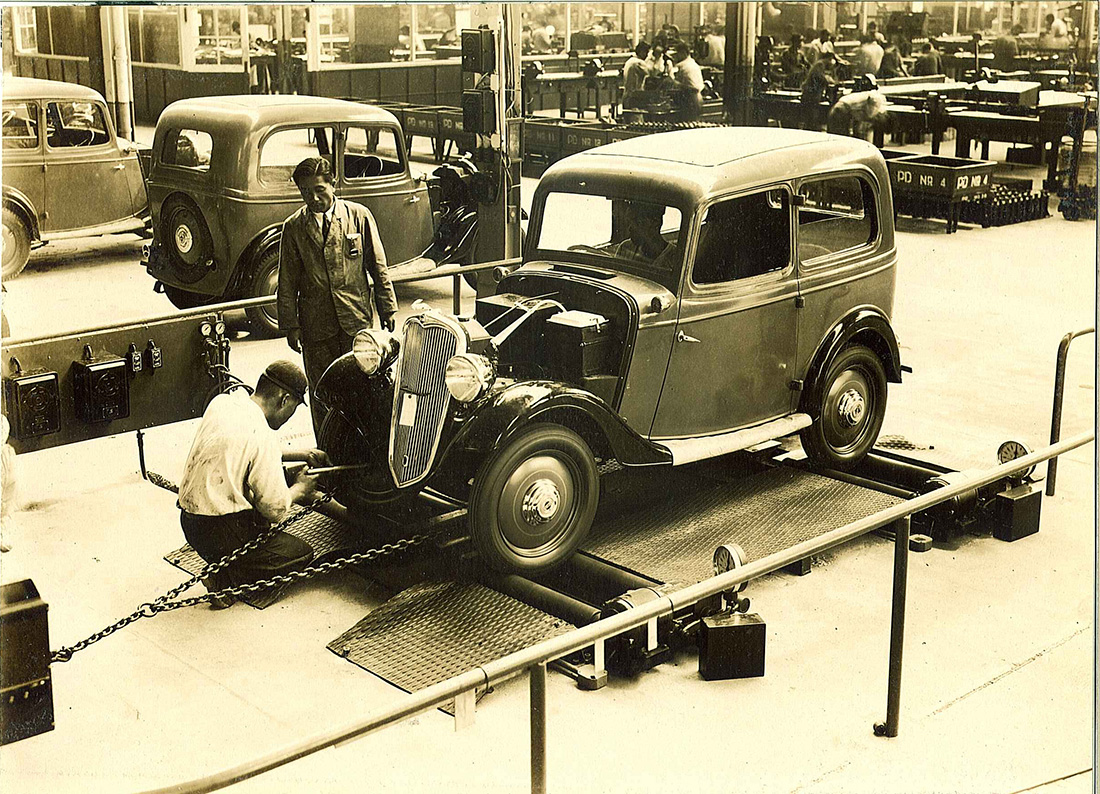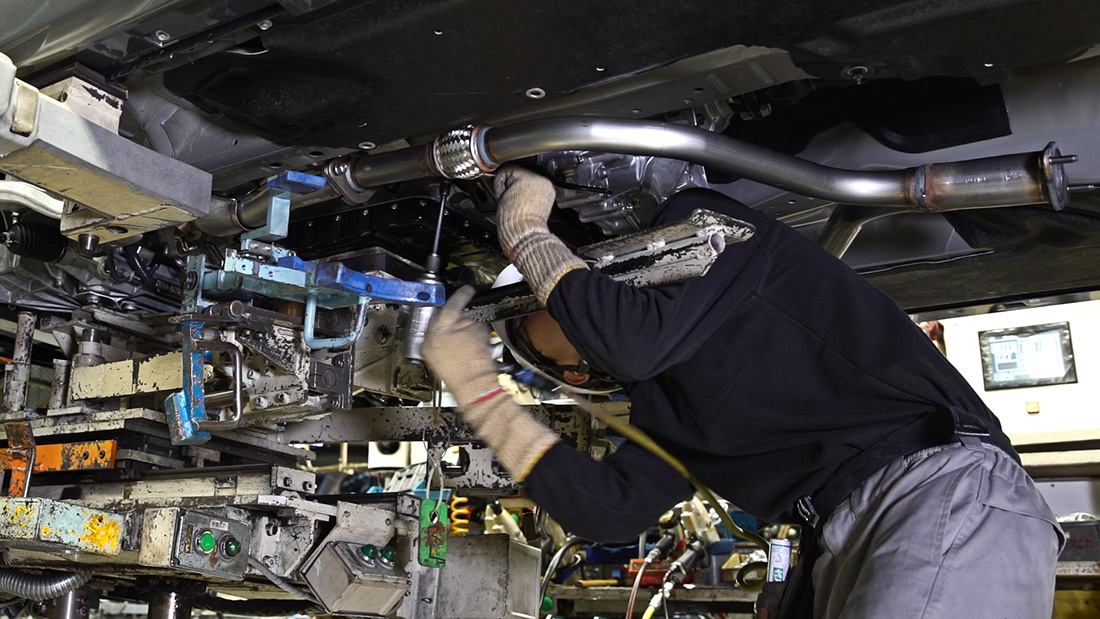
Ask a car buyer why they like a certain brand or model, and they will inevitably list things like design, reliability, price, technology, comfort and safety. They're far less likely to mention the car's manufacturing process or the guiding philosophy behind its production. While these may be invisible to most consumers, they're nonetheless essential to making sure customers can tick all the boxes on their list of desired qualities in a vehicle.
At Nissan, how we build cars is every bit as important as the cutting-edge technologies, sleek designs and safety features of the cars themselves. This is something Nissan has known since the company was founded in the early 1930s.
About 20 years after the development of the assembly line in the U.S., no Japanese automaker had yet attempted to mass-produce vehicles. Meeting this challenge required the creation of a new company through a series of mergers, the construction of a production facility of unprecedented size and modernity for Japan at the time, and the training of a workforce that could apply brand-new techniques not being used anywhere else in the country. That company was Nissan, and the facility was the Yokohama Plant - the site of Nissan’s original headquarters.


Pioneering Japan’s shift from hand-built to mass production meant that Nissan’s production engineers were the first to face a host of new logistical and technical problems that could only be solved using imported equipment and techniques. As a young startup, Nissan faced additional pressure to create products that were on a par with those of established competitors from the U.S. and Europe.
This combination of challenges gave the fledgling Nissan a sense of purpose that’s defined the company since: mass-producing vehicles with advanced features at the highest possible quality standards. The initial result was the Datsun 14, Japan’s first mass-produced car, which first rolled off the line in 1935. The car was a success, laying a solid foundation for Nissan’s business.


Eighty-six years later, we’re still driven by the same obsession, bringing industry-first technologies like ProPILOT 2.0 and e-POWER to customers in high-quality, affordable cars. In their current form, these kinds of technologies can be incorporated (although not always easily) into cars that have remained broadly unchanged in structure for decades. Likewise, the production lines making these vehicles are structurally similar to the original assembly lines pioneered by Ford more than a century ago.
This will need to change in the very near future, when Nissan’s cars themselves will be transformed by a once-in-a-generation evolution in technology and quality. This leap forward will come from new and more complex driving assistance systems, daring new body structures made possible with e-POWER or fully electric powertrains, the use of lighter and stronger materials, and tighter fit and finish. For customers, the benefits of such advanced cars will be dramatic. For Nissan’s engineers, building them represents a challenge rivalling the one their predecessors took on 86 years ago.

To meet the challenge, Nissan in November announced an initial 33 billion yen (about $300 million dollars) investment in our Tochigi Plant in Japan. This marked the start of a broader program to improve the capabilities and efficiency of our manufacturing facilities worldwide.
One example is the newly developed Universal Powertrain Mounting System, which can automatically and efficiently install any of the close to 30 powertrain configurations used by Nissan — whether combustion engine, e-POWER, or battery electric. Rolling out this system across Nissan’s plants will make it easier to offer customers a wider variety of powertrain options.

This system is just one of many new innovations that will help Nissan build better cars than ever. We’ve spent more than six years devising, testing and perfecting these technologies, and they’re finally ready to be rolled out globally.
For Nissan, there’s no question as to whether spending so much time, effort and money on this endeavor is worthwhile. After all, history tells us the value of rethinking production systems. We have the Datsun 14 to thank for that lesson.
To find out more about Nissan’s new production technologies, click here.





